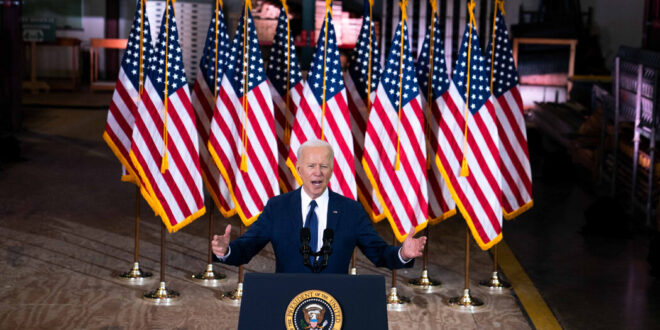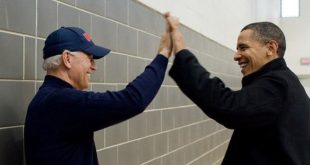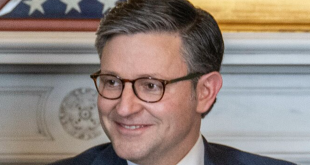WASHINGTON — America’s most celebrated infrastructure initiative, the interstate highway system, rammed an elevated freeway through the center of Claiborne Avenue in New Orleans in the late 1960s.
It claimed dozens of Black-owned businesses, along with oak trees and azalea bushes that had shaded Black children playing in the large neutral ground in the middle of the street, eviscerating a vibrant neighborhood whose residents fought in vain to stop the construction.
More than a half-century later, President Biden’s $2 trillion plan to rebuild aging roads, bridges, rail lines and other foundations of the economy comes with a new twist: hundreds of billions of dollars that administration officials say will help reverse long-running racial disparities in how the government builds, repairs and locates a wide range of physical infrastructure.
That includes $20 billion to “reconnect” communities of color to economic opportunity, like the Black residents still living in the interstate’s shadow along Claiborne.
Mr. Biden’s plan, which he unveiled on Wednesday in Pittsburgh, is the first step in a two-part agenda to remake the American economy. The president and his advisers have pitched that agenda — whose total cost could reach $4 trillion — in the grand terms of economic competitiveness and the granular language of shortened commute times.
But they have also stressed its potential to advance racial equity and bridge gaps in economic outcomes.
In addition to dedicated funding for neighborhoods split or splintered by past infrastructure projects, the proposal also includes money for the replacement of lead water pipes that have harmed Black children in cities like Flint, Mich.; the cleanup of environmental hazards that have plagued Hispanic neighborhoods and tribal communities; worker training that would target underserved groups; and funds for home health aides, who are largely women of color.
More traditional efforts to close racial opportunity gaps, like universal pre-K and more affordable higher education, are coming in the next phase of Mr. Biden’s plans. The exact mix of components is likely to change as Mr. Biden tries to push the plans through Congress.
Given the thin Democratic majorities in both the House and the Senate, the legislative battle is likely to be intense and highly partisan, with no assurance the White House will prevail.
Republicans have objected to the corporate tax increases Mr. Biden has proposed to fund this phase of his agenda, and they have accused the president of using the popular banner of “infrastructure” to sell what they call unrelated liberal priorities — including many of the programs White House officials say will advance economic opportunity for disadvantaged people and areas.
But liberal economists say the spending on transportation, housing and other areas of Mr. Biden’s initial plan could help advance racial equity, if done correctly.
“This is a promising start,” said Trevon Logan, an economist at Ohio State University whose work includes studies of how government spending projects, like the one that built the interstate highway system, have excluded or hurt Americans who are not white.
The biggest single piece of the plan’s racial equity efforts is not a transportation or environmental project, but a $400 billion investment in in-home care for older and disabled Americans. It would lift the wages of care workers, who are predominantly low-paid, female and not white.
“It’s the first jobs program that is focused primarily on work done by women of color,” said Mary Kay Henry, the president of the Service Employees International Union. “It’s going to transform Black, brown and Asian lives, and entire communities.”
White House officials say the $100 billion the plan allocates to improve and build out broadband internet will disproportionately help Black and Latino families, who have less access to affordable broadband than white families do.
Half of the $40 billion the plan would spend to upgrade research labs across the country would be reserved for colleges and universities that historically serve Black and other students of color.
Republicans have complained that much of the bill does not fund what they call traditional infrastructure like roads and bridges. “Biden’s plan includes hundreds of billions of spending on left-wing policies and blue-state priorities,” the Republican National Committee wrote in a news release, including “$400 billion for an ‘unrelated’ program for home care that ‘was a top demand of some union groups.’”
Mr. Biden has said he wants bipartisan support for the bill but has angered conservatives and businesses with his calls to fund it by raising taxes on corporations. Jen Psaki, the White House press secretary, said Thursday that Mr. Biden was open to discussing a narrower infrastructure bill with Republicans, although she said the White House has not received a proposal from them.
She declined to say what provisions Mr. Biden might be willing to drop.
“The administration designed this bill with an effort to meet the moment and to do it in a way that ensures we are looking at addressing challenges in our country through a lens of equity,” Ms. Psaki said.
Administration officials say concerns over racial inequality are an animating force of the infrastructure push. They peppered a 25-page explanation of the jobs plan this week with references to racial equity, and they included two specific examples of the sort of communities they hope to lift with the $20 billion for economic revitalization: the Black neighborhood in Syracuse that was partially bulldozed to make way for Interstate 81, and the Claiborne Expressway in New Orleans.
Government infrastructure spending is meant to make the economy work more efficiently. Freeways and rail lines speed goods from factories to market. Roads and transit systems carry workers from their homes to their jobs.
But for some communities of color, those projects devastated existing economies, leveling commercial corridors, cutting Black neighborhoods off from downtowns and accelerating suburbanization trends that exacerbated segregation.
“A lot of previous government investment in infrastructure purposely excluded these communities,” said Bharat Ramamurti, a deputy director of Mr. Biden’s National Economic Council. “So if you look at where we need to invest in infrastructure now, a lot of it is concentrated in these communities.”
Past projects were often built in communities that did not have the political capital or resources to successfully protest.
“When it comes time to build an interstate through a city, a pattern emerges: The areas that are displaced by that interstate will overwhelmingly be the areas occupied by African-Americans,” Dr. Logan said. Often, he added, lawmakers choose to build “in the places that have the least political power to make sure this doesn’t happen in their neighborhood.”
Eric Avila, an urban historian at the University of California, Los Angeles, said a consensus during the Dwight D. Eisenhower administration on the need to invest in highways that would connect neighborhoods to cities led to the exclusion of minority communities.
The federal government also used “urban renewal” or “slum clearance” redevelopment programs that often led to the clearing of the way for giant infrastructure projects like highways.
“These highways were essentially built as conduits for wealth,” Mr. Avila said. “Primarily white wealth, jobs, people, markets. The highways were built to promote the connectivity between suburbs and cities. The people that were left out were urban minorities. African-Americans, immigrants, Latinos.”
Mr. Avila pointed to how plans for the Inner Belt highway in Cambridge, Mass., were halted after protests by faculty members at Harvard and the Massachusetts Institute of Technology.
And in New Orleans, Mr. Avila said, plans for a highway called the Riverfront Expressway were canceled after officials faced pressure from protesters in the French Quarter. But Black protesters were not able to spare Treme, one of the nation’s oldest communities of free Black residents, from the construction of an elevated six-lane stretch of Interstate 10 along Claiborne Avenue.
Amy Stelly is reminded of that freeway each morning when the truck traffic causes her home to shudder. The emissions from the interstate a block away have turned jewelry that she placed near her window jet black.
“Anyone who lives near an urban highway knows what we’re breathing in every day,” said Ms. Stelly, an urban designer and activist against the project. “There’s a layer of silt that sticks on our properties and houses.”
It is unclear from the Mr. Biden’s plan, and conversations with White House officials, what the administration envisions for Claiborne Avenue. If the funding survives in any bill Mr. Biden might sign into law, those details will matter, said Deborah Archer, a director of the Center on Race, Inequality and the Law at New York University School of Law.
“I think it’s wonderful to be able to say and have the goal that this historic investment will advance racial equity,” Ms. Archer said. “It’s another thing to distribute these funds in a way that has impact.”
 Top Naija News: Nigerian News, Breaking News Nigeria and World News Top Naija News is a daily news publication in Nigeria, delivering the latest breaking news in Nigeria and around the world.
Top Naija News: Nigerian News, Breaking News Nigeria and World News Top Naija News is a daily news publication in Nigeria, delivering the latest breaking news in Nigeria and around the world.




